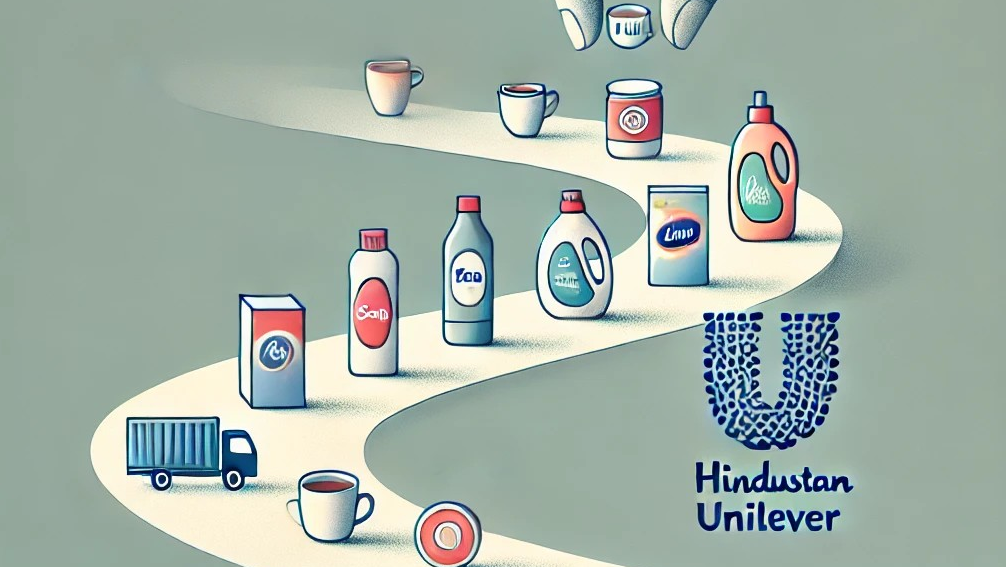HUL: The Invisible Hand That Shapes What India Buys (and Why It Matters)
Guest article by Sandeep K Nagpal
The Silent Architect of Indian Consumption
Step into any Indian household, and you’ll find an unmistakable common thread—Hindustan Unilever Limited (HUL) has left its imprint in every corner. Whether it’s Pepsodent in the bathroom, Surf Excel in the laundry room, Bru in the kitchen, or Lakmé on the dresser, HUL isn’t just a brand conglomerate; it’s a curator of national consumption habits.
But what makes HUL truly fascinating is not just its scale, but its ability to influence what India buys without the consumer even realizing it. Unlike flashy tech giants or disruptive startups, HUL operates quietly, consistently, and pervasively, ensuring its products aren’t just chosen but instinctively reached for.
This isn’t just a story of market dominance—it’s a masterclass in habit formation, brand trust, strategic segmentation, and futureproofing. Let’s explore how HUL has become India’s invisible hand in consumption—and why its playbook remains unmatched.
1. The Art of Ubiquity: Becoming the Default Choice
HUL doesn’t rely on brand awareness—it relies on brand inevitability. The company has engineered its portfolio to ensure that at every touchpoint of a consumer’s day, an HUL product is at play.
Morning: Brush with Pepsodent, wash with Lux, sip Taj Mahal tea
Midday: Cook with Knorr, hydrate with Lipton, clean with Vim
Evening: Refresh with Axe, style with TRESemmé, snack on Kissan
Night: Moisturize with Vaseline, unwind with Comfort fabric conditioner
By embedding itself into daily behaviors rather than one-off purchases, HUL makes switching brands not just a choice but an inconvenience.
Key Takeaway for Marketers:
To become indispensable, a brand must move beyond being an option—it must become part of consumer routines. The deeper a product integrates into habits, the less friction exists in the buying decision.
2. The Power of Legacy & Trust: Building Multi-Generational Brands
HUL’s empire isn’t just built on reach—it’s built on trust, familiarity, and generational loyalty.
Lakmé was India’s first beauty brand, trusted since the 1950s
Lifebuoy was a hygiene essential long before “germ protection” became a trend
Surf Excel doesn’t sell detergent—it sells emotion: “Daag Acche Hain”
The secret? Reinvention without alienation. These brands evolve to stay culturally relevant while retaining their core identity.
Key Takeaway for Marketers:
Sustained relevance isn’t about staying the same; it’s about evolving while staying rooted. Trust is built over decades—but lost in moments. Adapt wisely.
3. Mastering Segmentation: A Brand for Every Consumer
HUL’s real genius lies in portfolio segmentation—crafting products for every income bracket without cannibalizing its own brands.
Mass Market: Wheel, Clinic Plus, Vim
Mid-Premium: Dove, Sunsilk, Pepsodent
Premium/Niche: TRESemmé, Dermalogica, Minimalist, Magnum
This tiered approach ensures customer retention over a lifetime. A child using Clinic Plus may graduate to TRESemmé—but stays within HUL’s ecosystem.
Key Takeaway for Marketers:
Design your brand to allow consumers to grow within your ecosystem—not exit it as their purchasing power rises.
4. Health & Wellness: HUL’s Next Big Bet
HUL continues to stay ahead of the curve by pivoting toward nutrition and wellness.
Acquired Oziva, a digital-first wellness brand
Introduced Horlicks Diabetes Plus and Nutri Gummies
Expanded Indulekha in line with Ayurveda and organic trends
This isn’t just diversification—it’s futureproofing against declining demand for traditional FMCG products.
Key Takeaway for Marketers:
The next phase of consumerism is health-conscious and sustainable. Brands that move early will shape this next wave.
5. Defending Against Disruptors: Digital-First, Retail Strong
New-age D2C brands are booming, but HUL’s distribution moat remains unrivaled.
Digital-First Acquisitions: Buys rather than battles (Minimalist, Oziva)
Omnichannel Strategy: Dominates both kirana stores and e-commerce
Rural Reach: Even in the most remote village, there’s an HUL product
HUL strikes a perfect balance between legacy retail and digital agility.
Key Takeaway for Marketers:
D2C models are powerful, but omnichannel dominance is unbeatable for long-term market leadership.
Final Thought: The Indispensable FMCG Monopoly
HUL isn’t just an FMCG giant—it’s the silent architect of Indian consumer behavior. It has mastered:
Brand ubiquity (owning habits)
Trust & reinvention (legacy with relevance)
Market segmentation (a product for every wallet)
Wellness pivot (nutritional futureproofing)
Defensive agility (buying disruptors before they disrupt)
Its biggest challenge? Staying ahead in a world reshaped by personalization, sustainability, and digital-native expectations.
For now, HUL remains the invisible hand guiding what India buys—and that’s a branding masterclass in itself.

